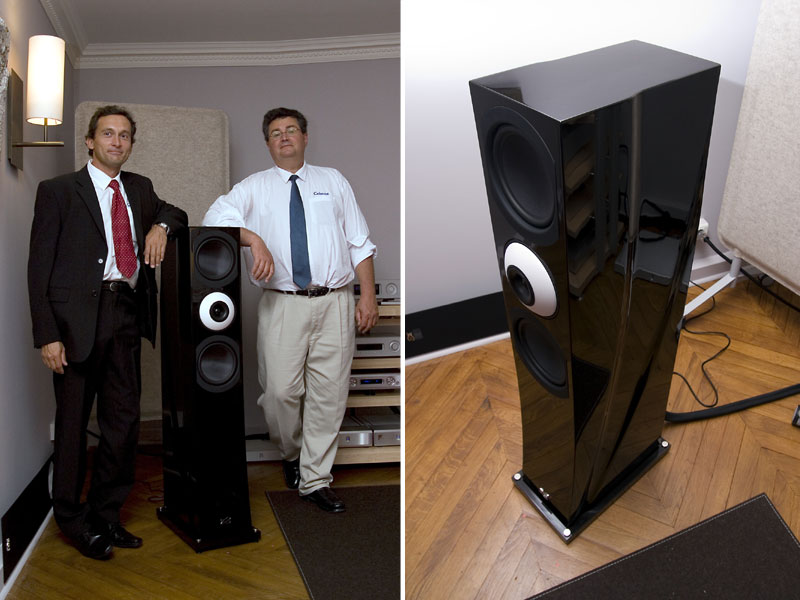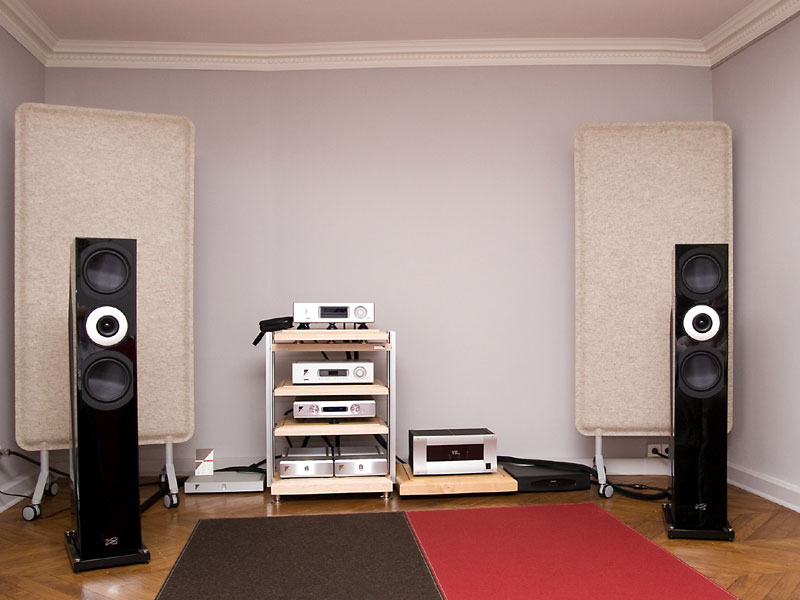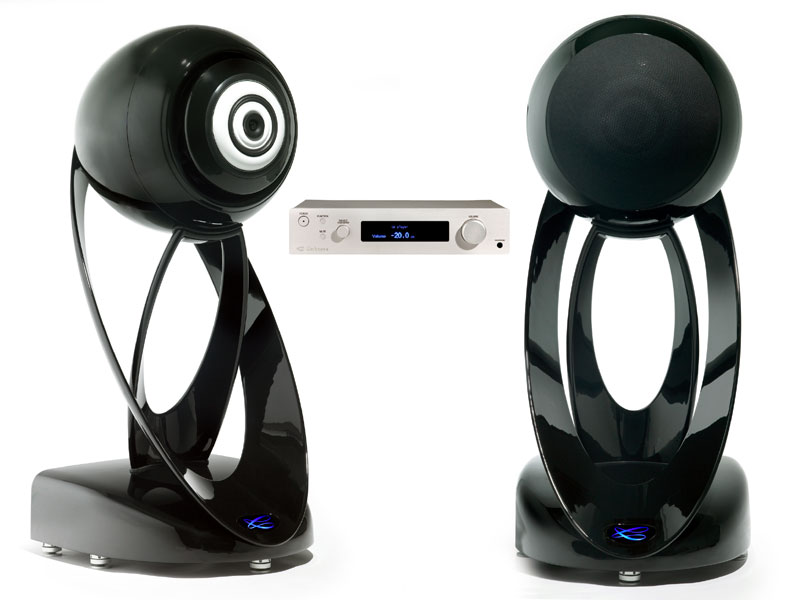First Sounds: Cabasse Pacific 3 and L'Ocean
Cabasse's Bernard Debail (left) and Christophe Cabasse pose with the Pacific 3 SA (€12000/pair). The head of Cabasse is the distinguished Christophe Cabasse, son of the founder, Georges Cabasse, who started the company in Brittany, Northwest France, in 1950. Since then it has become the biggest brand in its home market and claims to outsell Focal, its main French competitor, across Western Europe. It’s only in the world beyond that it lags behind, something Christophe is in the process of addressing. It’s pertinent to point out that Cabasse is not alone in its quest. The company started working with Canon in 2003, and three years later had made enough of a positive impression for the Japanese company to buy a majority share. So Cabasse is not just another French speaker company. It’s a French speaker company with the might of a multinational engineering company behind it. On one flank Cabasse is expanding its range of in-wall speakers for the custom-installation market with a number of new models, some of which are distinctly ambitious given their discreet nature. But it’s in the two-channel market in which Cabasse is really flexing its muscles. The first offering that Christophe revealed was the Pacific 3, a curvy floorstander that comes in two variations -- one passive (€9000/pair) and one semi-active (the SA version, €12000/pair). In either form, the speaker stands over four feet high and flares toward the base, which contains a 450-watt power amplifier presumably of class-D persuasion. It's based around Cabasse’s BC17 coaxial driver with a ring-shaped lower-mid unit and a dome driver for the upper-mid and treble regions -- a dome that kicks in at a very low 1.8kHz. Bass is handled by a pair of 8" drivers arranged D’Appolito style above and below the coax driver.
We -- a group of journalists -- listened to the Pacific 3 SA on the end of Ayre electronics, including the fabulous KX-R preamp and MX-R power amps (at the other end of the room sat Ayre’s previous range-topping preamp, the legendary K-1xe, a product I used for long enough to leave a lingering feeling that I should have invested in it while I could). The speakers sounded particularly appealing as part of this system, producing a beautifully timed, dynamic and revealing result with particularly fine rendition of "St John’s Infirmary" (quite possibly by Tom Waits, but don’t quote me on that) and a piece by Patricia Barber that made the most of the dynamics on offer. The useful thing about the Pacific 3 SA’s active bass is that it makes the speaker as a whole an easier load. It is also very sensitive -- 91.5dB. It would be fascinating to hear how it sounds with a single-ended-triode amp in the driving seat.
he pièce de résistance at this event was so hot that we were under strict instructions not to publish anything about it until four weeks after the visit -- essentially after Canon Europe had done the official unveiling. As it involves so much Canon engineering, the Japanese company wanted to be the first to tell the world at large. L’Ocean is a spectacular-looking beast. It resembles Cabasse's range-topping La Sphère in most respects except scale. It’s a semi-domesticated La Sphère, if you like, with the same helical stand and spherical shape, but one that’s 20" in diameter rather than the 27" beach ball that it emulates. It uses the TC23 three-way coaxial unit from La Sphère alongside a 15" honeycomb dome bass driver sitting directly behind. Like its forebear, it’s an active design, but the digital amplifiers, 2250 watts total, for the four drivers are stacked in the speaker’s base and thus are not designed to be bypassed, even if you do have eight channels to spare. The partnering controller is a preamplifier with five digital (up to 96kHz) and four analog inputs. This, too, is an integral part of the system. You cannot use a substitute preamp with the speaker, because the preamp contains room-correction hardware with parametic EQ and DSP that adapt the speakers’ response to the given environment. Cabasse has taken psycho-acoustic considerations into account alongside the characteristics of the loudspeakers themselves in order to produce a coherent result.
The sound L'Ocean produced with a Soulution 740 CD player used as a transport was incredibly clean and extremely refined. I managed to nab the hot seat and have to say that the imaging was up there with the very best I’ve encountered. The track that made the biggest impression was from Nils Lofgren’s Acoustic Live [Capitol 95736], which radiated a warmth and presence that placed the man in front of us in no uncertain terms. Clearly the system that Cabasse has developed to automatically remove room-induced tonal variations works extremely well. All that power helps to keep the result as effortless and smooth as possible. If anything, L’Ocean sounds more like a Japanese speaker system than one from Cabasse. This is largely due to the extraordinary level of finesse. If you are familiar with Accuphase or, for that matter, a lot of high-end Japanese solid-state hardware, you will know what I'm talking about. From what we were told, Canon’s involvement in the development of L’Ocean has been significant. The last time Canon got involved with loudspeakers it produced something that was not so different from Bang & Olufsen’s Beolab 5, which is also digitally powered and room-equalized, albeit with a different approach to dispersion. Having had so much success with digital technology in other fields, Canon must have found it natural to pursue the same theme in audio, and this time it has aimed high. Sadly, our listening time was not sufficient to get a proper idea of L’Ocean’s full capabilities, and we weren’t able to play our own music. But what we heard was certainly a powerful appetizer, and I will be putting in a request for a review pair of the speakers as soon as such things come along. It will be interesting to see if this
project spawns real-world follow-ups. At €80,000 per pair, L’Ocean is still a
rather dear beast. However, with luck, some of the technology developed for it will filter
down to the mainstream. |



